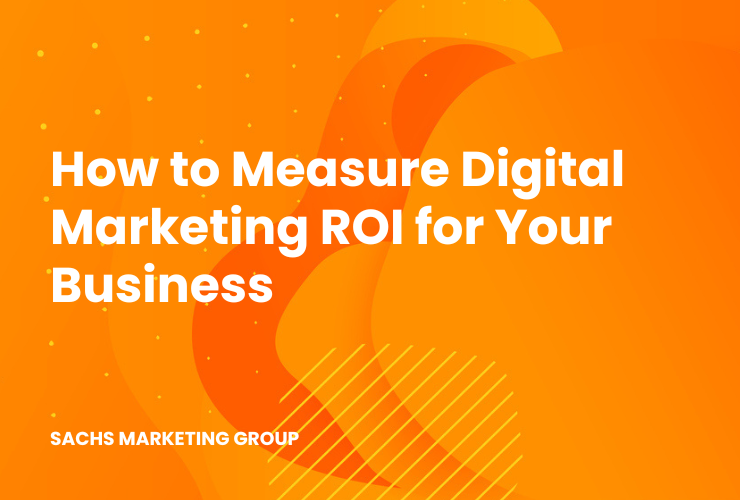Measuring digital marketing ROI entails tracking conversions related to your digital campaigns, assessing the revenue generated from these campaigns, and comparing this to the cost of running the campaigns. This calculation provides invaluable insight into the effectiveness of your marketing spend.
Understanding the return on investment (ROI) for digital marketing efforts is not just about numbers—it’s about the value and effectiveness of every dollar spent. It’s essential to distinguish between the strategies that genuinely drive your business forward and those that falter.
In this article, we’re diving into the importance of measuring ROI and sharing how to measure digital marketing ROI for your business.
Overview
Why It’s Important to Measure ROI
Knowing the ROI of your digital marketing campaigns is critical because it directly impacts your bottom line.
By measuring ROI, you gain clarity on which marketing initiatives work, and which don’t, and how you can optimize your budget for maximum impact. With a clear ROI, you can refine your marketing strategy to focus on high-performing channels and campaigns, ensuring that your marketing budget is invested in avenues that generate the best returns.
This not only helps in justifying marketing expenses but also in making informed decisions that contribute to business growth.
How to Measure Digital Marketing ROI for Your Business
To effectively measure digital marketing ROI for your business, you need a combination of the right tools, strategies, and a clear understanding of your goals.
First, establish what constitutes a conversion for your campaigns – it may be a sale, a lead, a download, or any other valuable action by the user. Next, track these conversions using analytics tools to determine which campaigns are leading to these conversions and calculate the revenue generated from them. Deduct the cost of the campaign from the revenue, and divide it by the campaign cost to get the ROI percentage.
Here’s how to measure digital marketing ROI step-by-step:
Set Clear Goals and Objectives
Establishing clear goals and objectives is the bedrock of any successful digital marketing campaign.
These targets should be specific, measurable, achievable, relevant, and time-bound (SMART). For example, rather than aiming for ‘more website traffic,’ set a goal to ‘increase website traffic by 25% within the next quarter through SEO and content marketing efforts.’ This specificity allows for precise measurement and clearer strategic direction. Additionally, aligning your digital marketing goals with your broader business objectives ensures that your marketing efforts contribute meaningfully to your company’s growth and vision.
For example, a local bakery wants to increase its online sales. After setting a specific objective to boost online orders by 30% over the next six months, they launched a targeted social media ad campaign promoting their delivery services. By the end of the campaign, they not only met but exceeded their goal with a 35% increase in online sales, indicating a clear path to scale their digital efforts.
Track Conversions
Tracking conversions is crucial to understanding the effectiveness of your digital marketing efforts. Conversions can range from completed sales transactions to newsletter sign-ups or downloaded resources, depending on what action you value most.
Utilizing tools like Google Analytics or Facebook Pixel, you can monitor these conversions and attribute them to specific campaigns or channels. This lets you see which aspects of your digital marketing strategy drive results and which might need tweaking.
For example, a rehab treatment center used Google Analytics to track the number of admissions and discovered that their addiction treatment PPC campaign has the highest conversion rate compared to organic search and social media. By focusing more resources on PPC, they saw a 50% increase in trial sign-ups, leading to more paid subscriptions.
Calculate Revenue Generated
Once you’ve tracked your conversions, the next step is to calculate their generated revenue.
This involves assigning a value to each type of conversion. For direct sales, it’s straightforward, but for leads or other non-purchase conversions, you may need to estimate the value based on past sales data and the conversion rate from lead to sale. Calculating the revenue generated from your digital marketing efforts lets you determine the actual financial return, not just the conversion count.
A SaaS company offers a tiered subscription model. By analyzing their conversion data, they find that their email marketing campaign has resulted in 100 new subscriptions, with an average monthly subscription value of $500. This translates directly to $50,000 in generated revenue, which can be directly attributed to the email marketing campaign’s success.
Determine Campaign Costs
Understanding the full cost of your digital marketing campaign is essential to measure ROI accurately. This includes direct costs such as ad spend, software subscriptions, payments to agencies or freelancers, and indirect costs like salaries of in-house marketing teams.
Investing in the time invested in campaign management and content creation is also important. A comprehensive view of these costs ensures that when you calculate ROI, you have accounted for every investment, which provides a true picture of the campaign’s profitability.
If a mental health professional spends $3,000 on SEO for their mental health website and an additional $1,000 on creative development, their total campaign cost is $4,000. This figure will be used to calculate ROI, ensuring that they consider all relevant expenses to understand the campaign’s true financial impact.
Analyze Data
Data analysis is pivotal for interpreting how well your digital marketing efforts are performing. Look beyond surface-level metrics like clicks and impressions to more indicative data such as engagement, conversion, and customer acquisition costs.
Utilize analytics tools to segment data by campaign, channel, or audience to uncover deeper insights into performance. This granular analysis helps identify what’s working and what’s not, empowering you to make informed decisions about where to allocate your budget.
For example, a software firm delves into its analytics and notices that while its recent content marketing efforts have increased site traffic, the bounce rate for this traffic is high. They realize that while the content attracts visitors, it does not engage them effectively. Armed with this insight, they can refine their content strategy to meet their audience’s needs and interests better.
Calculate the ROI
Calculating the Return on Investment (ROI) is the culmination of tracking conversions and determining campaign costs. ROI is typically expressed as a percentage and is calculated by subtracting the campaign cost from the revenue generated, dividing that number by the campaign cost, and multiplying by 100.
This calculation gives you a clear picture of the profitability of your marketing efforts in percentage terms, enabling you to gauge which campaigns yield the best returns and deserve more investment.
Example: If a tech company generates $100,000 in sales from a campaign that costs $40,000, their ROI would be [(100,000 – 40,000) / 40,000] x 100 = 150%. This indicates a high return on their investment, justifying continued or increased spending on similar campaigns.
Test and Optimize
Continuous testing and optimization elevate a good digital marketing strategy to a great one. A/B testing different elements of your campaigns, from email subject lines to landing page designs, can reveal valuable insights into what resonates best with your audience. Use these findings to refine your messaging, targeting, and strategy. The goal is to boost efficiency and efficacy over time, increasing ROI.
Example: An e-commerce store conducts A/B tests on its landing pages and finds that pages with customer testimonials convert 25% better than those without. They then optimize all landing pages to include testimonials, which leads to an overall increase in conversion rates and a more effective use of ad spend.
Leverage Technology
In today’s digital world, leveraging the right technology can significantly enhance your marketing efforts and the accuracy of your ROI calculations. Automation tools can streamline campaign management, AI can provide predictive analytics, and CRM systems can help track customer interactions more precisely. By harnessing these technologies, you can gain more nuanced insights, reduce human error, and save time, positively influencing ROI.
Example: A real estate company integrates a CRM system with its digital marketing campaigns, which allows for precise tracking of customer journeys from initial contact to final sale. This integration provides a clear view of which marketing initiatives drive sales and at what cost, enabling the company to fine-tune its marketing spend for optimal ROI.
Hire A Digital Marketing Agency for Help
Hiring a digital marketing agency equips businesses with specialized expertise and advanced tools necessary for effective digital strategy and precise ROI measurement.
Agencies like Sachs Marketing Group streamline goal-setting and campaign analysis and bring a comprehensive understanding of various marketing platforms, freeing up your internal resources. Their proficiency encompasses detailed evaluations such as customer lifetime value assessments and fine-tuning tactics based on performance data.
By partnering with an agency, companies gain a competitive edge through tailored insights, management of complex marketing tasks, and staying current with industry trends. Agencies offer the agility to adapt to market shifts and the strategic foresight to leverage new technologies, ensuring that your marketing efforts yield optimal returns and keep you at the industry’s forefront.
Want to Improve the ROI of Your Digital Marketing?
At Sachs Marketing Group, we understand that measuring and optimizing your digital marketing ROI is crucial for your business’s success.
That’s why we provide comprehensive services to help you measure and enhance your ROI. With our detailed monthly reports and analysis, we empower you to see the direct impact of your marketing strategies on your bottom line.
Our expert team works tirelessly to optimize your campaigns and deliver your desired results. Let’s elevate your digital marketing together.
Contact us today to learn how we can help you improve your digital marketing ROI.
Conclusion
Measuring digital marketing ROI is not an option but is necessary in today’s data-driven marketing landscape. It enables businesses to make intelligent, informed decisions that maximize the effectiveness of their marketing budgets.
By following the steps outlined, you can establish a solid framework for measuring the success of your digital marketing efforts. Remember, the goal is not just to calculate ROI but to understand what your ROI tells you about the health and effectiveness of your digital marketing strategies. With these insights, you can continually refine your approach to achieve better results and drive sustainable business growth.
1 Comments
Leave a Reply
Contact us today to get the conversation started!














If you have any questions, please feel free to ask them here in the comments section!